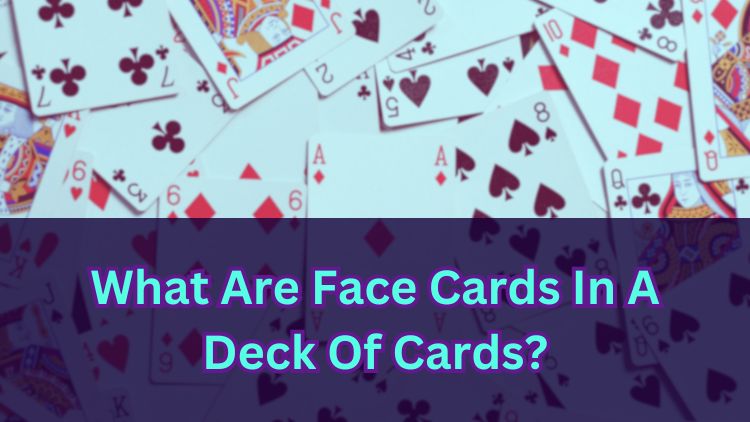
In a standard deck of cards, face cards play a key role in many popular games, from casual family fun to competitive card matches. Among the 52 cards in a standard deck, face cards hold a unique significance—but what exactly does this involve?
This introduction will provide a clear explanation of face cards, helping to highlight their significance and how they contribute to various card games. Continue reading to learn more about face cards and their role in the deck.
What Are Face Cards?
In a standard deck of 52 playing cards, face cards refer to the king, queen, and jack of each suit—hearts, diamonds, clubs, and spades. These cards are easily identifiable by their detailed portraits, which depict figures of royalty: the king as a powerful ruler, the queen as a graceful lady, and the jack often representing a young prince.
Face cards are essential in many card games. For example, in blackjack, they carry a value of 10 points, making them important for players trying to reach a total of 21.
How Many Face Cards Are In a Deck of Cards?
In a standard deck of 52 playing cards, there are 12 face cards. These include the kings, queens, and jacks from each of the four suits: hearts, diamonds, clubs, and spades.
Each suit contains three face cards: one king, one queen, and one jack. With four suits in total, this gives us 12 face cards throughout the deck.
Recognising face cards by their distinct royal portraits can be helpful in many games. For instance, in blackjack, understanding the value and frequency of face cards may help a player plan their approach.
What Are Face Cards Worth In Blackjack?
In blackjack, face cards play an important role due to their consistent value. Whether it’s a king, queen, or jack, each face card is worth 10 points, regardless of the suit—hearts, diamonds, clubs, or spades.
When a player draws a face card, it adds 10 points to their hand’s total. For example, if a player has a 7 and draws a queen, their hand total would be 17 points.
These cards can quickly raise a player’s total, but it’s important to be cautious. Going over 21 points results in a bust, meaning the player loses the round.
Is an Ace a Face Card?
An ace is not considered a face card. In a standard deck, face cards specifically refer to the jack, queen, and king, all of which feature images of people.
The ace, on the other hand, is distinct. It doesn’t depict a person’s face but instead displays a single suit symbol, such as a heart, diamond, club, or spade.
The value of an ace can vary depending on the game. In blackjack, for example, an ace can be worth either 1 or 11 points, depending on what best benefits the player’s hand. In poker, the ace can be the highest or the lowest card, depending on the context of the hand.
Always keep responsible gambling practices in mind.
**The information provided in this blog is intended for educational purposes and should not be construed as betting advice or a guarantee of success. Always gamble responsibly.
